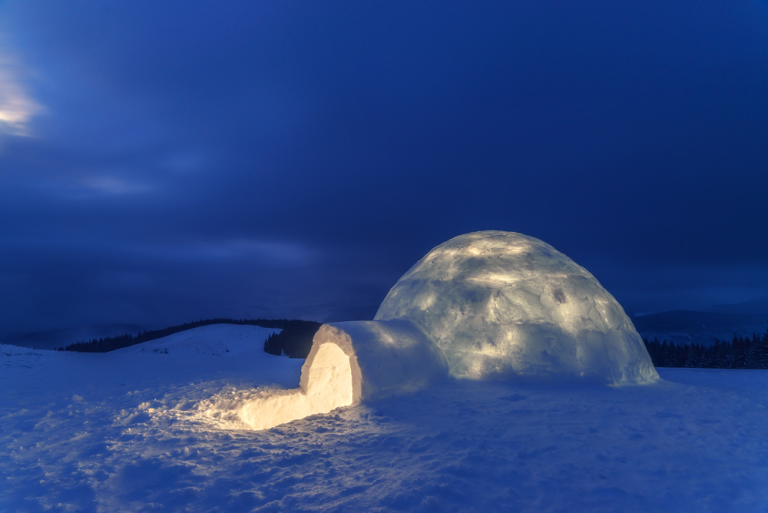Contents
ToggleIn short
Quviasukvik (ᖁᕕᐊᓲᑎᖃᕐᕕᒃ), is the first day of the year according to the Inuits. New Year's Day is celebrated by the Inuit, the Yupik, the Aleut, Chukchi and Iñupiat. The Quviasukvik festival begins on Christmas Eve and ends on January 7. This festival celebrates the coming of the new year and the sea goddess, Sedna and the transfer of spirits for good luck in the new year. During these days, many traditional customs are displayed. Due to Christian influences, Christmas was considered a new year for the Inuit.

Quviasukvik, the New Year of the Inuit people
Arctic explorer C. F. Hall, staying with the Nugumiut on southern Baffin Island in 1864, provides a remarkable description and one of the earliest accounts of the festival:
"At a time of the year which apparently corresponds to our Christmas, they have a general assembly in a large igdlu [snow house] on a certain evening. There the angakoq [shaman] prays on behalf of the people for public prosperity throughout the following year.
Then follows something like a feast. The next day all go out into the open air and form a circle; in the centre is placed a vessel of water, and each member of the company brings a piece of meat, the kind being unimportant. The circle being formed, each one eats his meat in silence, thinking of Sedna and wishing good things. Then one member of the circle takes a cup, draws a little water, thinking all the time of Sedna, and drinks it; then, before passing the cup to another, he audibly indicates the time and place of his birth. This ceremony is performed by all in succession.
Finally, presents of various articles are thrown one after another, with the idea that each will receive from Sedna good things in proportion to the liberality here shown. Soon after this occasion, at an hour which corresponds to our New Year's Day, two men set out, one of them dressed to represent a woman, and go to every house in the village, blowing out the light in each.
The lights are then rekindled by a new fire. When Taqulitu was asked the meaning of this, she replied, "New sun-new light," implying the belief that the sun was at this time renewed for the year. (1864, 1, p. 528)
Another more detailed account by Franz Boas in 1888 from Qiqirtat (Kekerten Island) in Cumberland Sound highlights the coherence of this festival and the importance of the New Year celebration to the Inuit:
"The men gather early in the morning in the middle of the colony. As soon as they are all together, they run screaming and jumping around the houses, following the course of the sun (nunajisartung or kaivitijung). Some, dressed in women's jackets, run in the opposite direction. These are those who were born in abnormal presentations.
The circuit made, they visit all the huts, and the woman of the house must always wait for them. When she hears the sound of the band, she goes out and throws a dish containing small presents of meat, ivory trinkets, and sealskin articles into the howling crowd, which each helps himself to as he pleases. No hut is omitted in this tour (irqatatung).
The crowd then divides into two groups, the ptarmigans (axigirn), those born in winter, and the ducks (aggirn), the children of summer. A large sealskin rope is stretched out. One party takes one end and tries with all its might to drag the opposing party along with it. The others cling to the rope and try just as hard to force their way through. If the ptarmigans give way, summer has won the game and good weather can be expected during the winter (nussueraqtung).
Social networks
Today, the Inuit people celebrate Quviasukvik. Different culinary, offering and fire rites allow the renewal of light and the extension of sunshine for the year to come. #mythology #myth #legend #calendar #December 24 #inuit #quviasukvik
Picture
